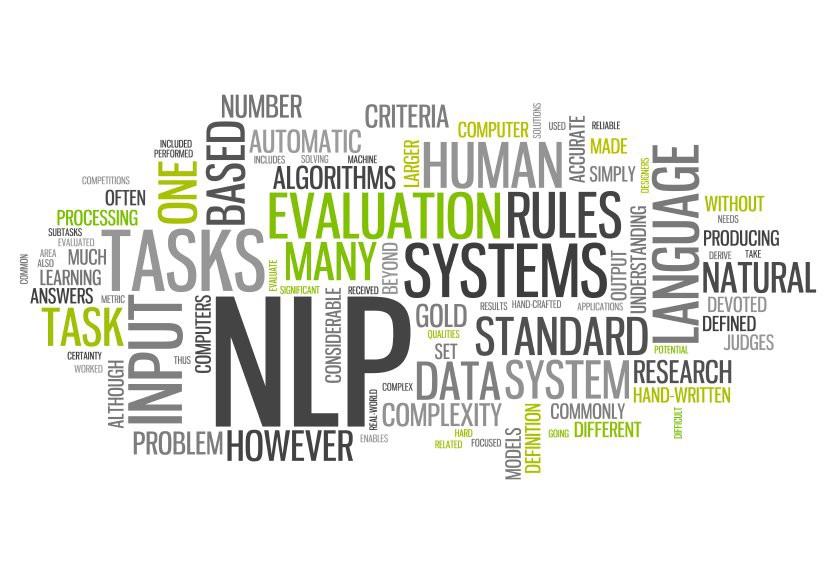Introduction
Natural language processing (NLP) is a field of computer science and artificial intelligence that focuses on the interaction between computers and human (natural) languages. It involves developing algorithms and models to analyze, understand, and generate human language, enabling computers to perform sentiment analysis, language translation, text summarization, and tasks.
Natural language processing (NLP) is one of the most exciting areas of artificial intelligence (AI) and machine learning (ML). According to Mordor Intelligence, the global NLP industry is expected to be worth US$42.04 billion by 2026, with a CAGR of 21.5%.
This article will discuss the top 10 articles in the field of NLP, highlighting their critical contributions and impact. These articles cover various topics, from deep learning approaches for NLP to developing and deploying NLP systems. Whether you are a researcher, engineer, or simply interested in the latest developments in NLP, these articles provide a valuable resource for staying up-to-date on the latest research and applications.
Below listed are the top NLP blogs published on Analytics Vidhya. So, let’s start digging.
1. Keyword Extraction Methods from Documents in NLP
Keyword extraction is commonly used to extract meaningful information from paragraphs or documents. It is an automated process of extracting the most relevant words and phrases from text input. Keyword extraction can sift through the data and find the terms that best define each review. This article by Pradeep T will show you how to extract keywords from documents using natural language processing tools like Rake, spacy, textrank, etc.
If you are interested in learning these keyword extraction methods, this article is for you.
Tools: Python
Method: Extracting keywords using Rake_NLTK, Spacy, Textrank, Word cloud, KeyBert, Yake, MonkeyLearn API, Textrazor API
Level: Intermediate
2. Four of the easiest and most effective methods to Extract Keywords from a Single Text using Python
The article by Ali Mansour presents four cutting-edge techniques for extracting keywords/keyphrases and code implementations for each. Each of them successfully extracted keywords that are either similar to the author’s keywords or close to them and related to the field. In the future, we will present a novel new for automating keyword extraction, and its performance will be compared to the formerly mentioned baselines and many others.
Tools: Python
Method: Vectorization of text
Level: Beginner
3. Speech-to-Text Conversion in Python – A Step-by-Step Tutorial
If you are looking for a step-by-step guide for converting speech to text through python, this article by Prashant Sharma is for you.
Throughout the history of computers, the text has been the primary input type. However, thanks to NLP and ML Data Science advancements, we will soon be able to use speech as a medium for interacting with our gadgets. For the first time in modern technology history, the ability to convert spoken words into text is freely available to anyone who wishes to experiment. Python, one of the most popular programming languages, provides many options for developing speech-to-text applications.
Tools: Python
Method: Speech-to-text conversion
Level: Advanced
4. Stemming vs. Lemmatization in NLP: Must-Know Differences
In this article by Saumya Bansal, you will learn about text Normalization techniques used in Natural Language Processing, i.e., lemmatization and stemming. Inflected Language is another term for a language with derived words. For example, the word “historical” is derived from the word “history,” and thus is a derived word. Furthermore, the degree of inflection varies from low to high depending on the language.
If you are confused about using stemming or lemmatization for text normalization, this article will help you choose the best fit.
Tools: Python
Method: Stemming and Lemmatization
Level: Beginner
5. Sentiment Analysis Using Python
This article by Suvrat Arora explores what sentiment analysis encompasses and the various ways to implement it in Python. Sentiment Analysis is a Natural Language Processing (NLP) use case that falls under text classification. Sentiment Analysis categorizes a text as positive or negative, happy, sad, neutral, etc. Thus, the ultimate goal of sentiment analysis is to determine a text’s underlying mood, emotion, or sentiment.
Further, the article covers various use cases of sentiment analysis and how python offers a multitude of ways to perform sentiment analysis.
Tools: Python
Method: Sentiment Analysis
Level: Beginner
6. NLP Tutorials Part -I from Basics to Advance
The article by Abhishek Jaiswal discusses various techniques for preprocessing textual data. Following data cleaning, it explains how to conduct exploratory data analysis with a word cloud and generate word frequency. If you want to learn more about the basics and advanced processes associated with NLP, then this is the perfect read for you.
Tools: Python
Method: Textual data preprocessing
Level: Beginner
7. Decision Tree Machine Learning Algorithm Using Python
This article by Amrutha K talks about the Decision Tree Machine Learning algorithm. A Decision Tree is a supervised machine learning algorithm in which all decisions are based on certain conditions. The decision tree has a root node and leaf nodes that branch out from it. These nodes were chosen based on parameters like the Gini index, entropy, and information gain.
Read the article to learn more about decision tree algorithms.
Tools: Python
Method: Decision tree
Level: Intermediate
8. Tutorial on RNN | LSTM |GRU with Implementation
In NLP, we have seen some NLP tasks using traditional neural networks, like text classification and sentiment analysis. This article by Abhishek Jaiswal covers the problem with NLP and how to solve these problems through the hidden layers of RNN. Hidden layers help RNN to remember the sequence of words and use the sequence pattern for the prediction.
Tools: Python
Method: RNN, LSTM, Bidirectional LSTM, and GRU
Level: Beginner
9. Roadmap to Master NLP in 2022
If you have been looking to learn and master NLP, then this article by Chirag Goyal is the perfect one. The article quickly snowballed into a detailed explanation of the pedagogical approach implied by the author and how he transitioned from a Mechanical Engineering nerd to a Natural Language Processing enthusiast.
Natural Language Processing is the area of research in Artificial Intelligence that mainly focuses on processing and using text and speech data to create intelligent machines and insights from the data.
The article further discusses all the resources to learn the NLP-related topics mentioned. If this interests you, give a thorough reading of the article.
Tools: Python
Method: Natural language processing
Level: Beginner
10. Text Data Augmentation in Natural Language Processing with Texattack
This article by Priya Tidke discusses data augmentation, where, and how to use it.
Data Augmentation is a process that enables us to artificially increase training data size by generating different versions of real datasets without collecting the data. Its strategy is used in computer Vision and Natural Language Processing dealing with data scarcity and insufficient data diversity. It is relatively easy to create augmented images, but with NLP, it is not the same due to the complexities inherent in the language. The distribution of augmented data generated should neither be too similar nor too different from the original.
While Data Augmentation techniques are used in Computer Vision and NLP, this tutorial focuses on using Data augmentation in NLP through TextAttack library.
To get more information about methods under TextAttack libraries, read ot blog from the link above.
Tools: Textattact
Method: Data Augmentation
Level: Advanced
Conclusion
Evolving technology is assisting in developing more innovative NLP systems that are more dynamic and mature in their functional and operational capabilities. The above listed are the ten blogs that would play a critical role in shaping the future of NLP systems and help the industry to make giant strides in its appeal. These blogs are precisely what you are looking for if you want to learn more about NLP and its concepts.
So, spend these winter vacations learning from the best of our resources and mastering the art of NLP. We will see you in 2023 with more learnings from undiscovered topics.
Did this article give you an in-depth analysis of NLP and its tools & techniques? If yes, subscribe to us for some fantastic data science content, and you can leave a comment to help us know which article you would like us to cover further.
Happy Reading!







